As we approach the final stretch of winter, many pet owners are looking forward to warmer weather, but there are still a few cold weeks left that could bring ice, snow, and chilly conditions. While your pet might enjoy playing in the snow or taking a winter walk, it’s essential to take extra precautions to keep them safe and comfortable as the cold weather lingers. One of the most vulnerable parts of your pet during winter is their paws. Ice, snow, and the chemicals used to melt them can cause discomfort and even injury if not properly cared for.
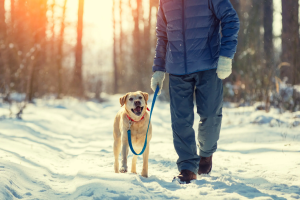
Here are some essential tips to help protect your pet’s paws and ensure they stay safe and comfortable in the remaining weeks of winter
Check Paws Regularly for Ice and Snow Build-Up
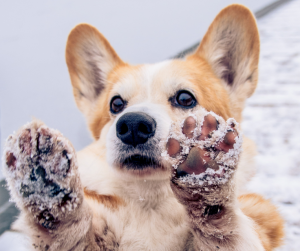
After walks in the snow or on icy surfaces, it’s important to check your pet’s paws thoroughly. Ice and snow can easily become trapped between the pads of their feet, causing discomfort and potentially leading to injury. Ice build-up can also makewalkingdifficult for your pet. Gently wipe your pet’s paws with a towel after each outdoor adventure, paying close attention to the spaces between their toes and pads. If you see snow or ice clinging to their paws, carefully remove it. In extreme cases, you may need to trim the fur between their pads to reduce the risk of ice getting stuck.
Protect Paws from Salt and Chemicals
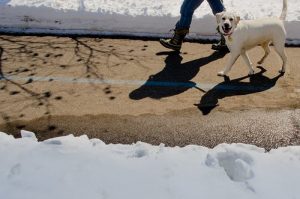
Many cities use salt, de-icers, and other chemicals to melt ice on roads and sidewalks during winter. While this is helpful for people walking on the streets, these chemicals can be harmful to your pet’s paws if they come into contact with them. Salt can cause irritation, dryness, and even burns to the paw pads. Additionally, if your pet licks their paws after walking in salted areas, they may ingest harmful chemicals.
To protect your pet’s paws, you can:
Use Paw Balms or Waxes: There are several paw balms or waxes available that form a protective barrier on your pet’s paws, keeping salt and ice from sticking to their feet. Apply a small amount of balm before your walk and reapply afterward.
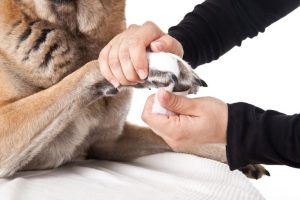
Wipe Paws After Walks: Always wipe your pet’s paws thoroughly after they’ve been outside, even if they haven’t been walking on salty roads. Use a damp cloth or pet-specific wipes to remove any residue, ensuring their paws stay free from harmful chemicals.
Opt for Pet-Safe De-Icers: If you have a driveway or walkway that needs to be cleared, look for pet-safe de-icing products. These are typically less toxic and more gentle on your pet’s paws.
Consider Protective Footwear
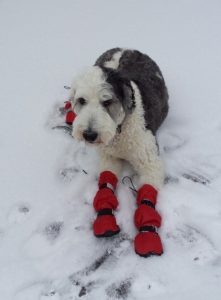
While it may seem like a hassle to put shoes on your pet, protective boots or paw coverings can be a great option to keep their paws safe in extreme winter conditions. Many pets will need some time to get used to wearing boots, so introduce them slowly and reward them with treats and praise. Once they’re comfortable, boots can help protect their paws from the cold, salt, and rough surfaces. They also provide extra grip on icy terrain, reducing the risk of slipping.
Limit Walks in Extreme Weather

If the weather is particularly harsh with freezing temperatures, snowstorms, or icy conditions, it might be best to limit outdoor activities. Cold weather can cause frostbite on paws, especially in short-haired breeds or pets with sensitive skin. Instead, try shorter indoor play sessions to help your pet burn off energy. You can use toys, treat puzzles, or even create an obstacle course to keep them entertained indoors.
Keep an Eye on Your Pet’s Behavior
Pay attention to any changes in your pet’s behavior after walks in the cold. If they start limping, licking their paws excessively, or seem uncomfortable, it could be a sign that something is wrong with their paws. In these cases, examine their feet for cuts, cracks, or redness, and consult your vet if necessary.
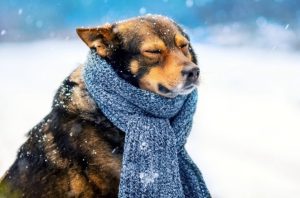
Be Aware of Hidden Hazards
When snow begins to melt, hidden dangers like sharp ice or debris may surface. These can cause cuts or injuries to your pet’s paws, so make sure to walk on cleared paths when possible. Also, be mindful of areas where there might be icy patches, as slipping and sliding can lead to injuries for both you and your pet.
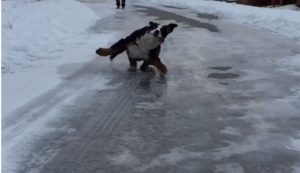
Winter’s final stretch doesn’t mean the risks for your pet are over, but with a little extra care, you can help protect their paws and ensure they stay safe during the colder months. By checking their paws regularly, using protective measures like paw balms and boots, and being mindful of their comfort, you can enjoy the remaining winter months with your furry friend, knowing they’re well cared for.
Stay warm and safe out there, and don’t forget to share these tips with other pet parents to keep everyone’s pets healthy during the winter season!
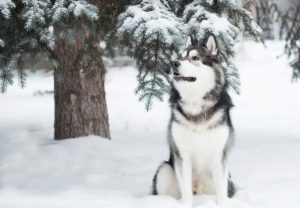
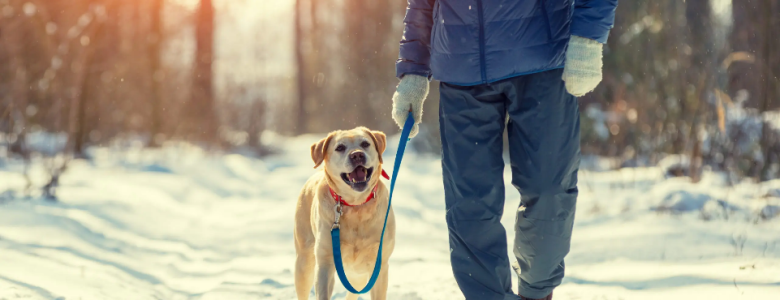




Leave a Reply